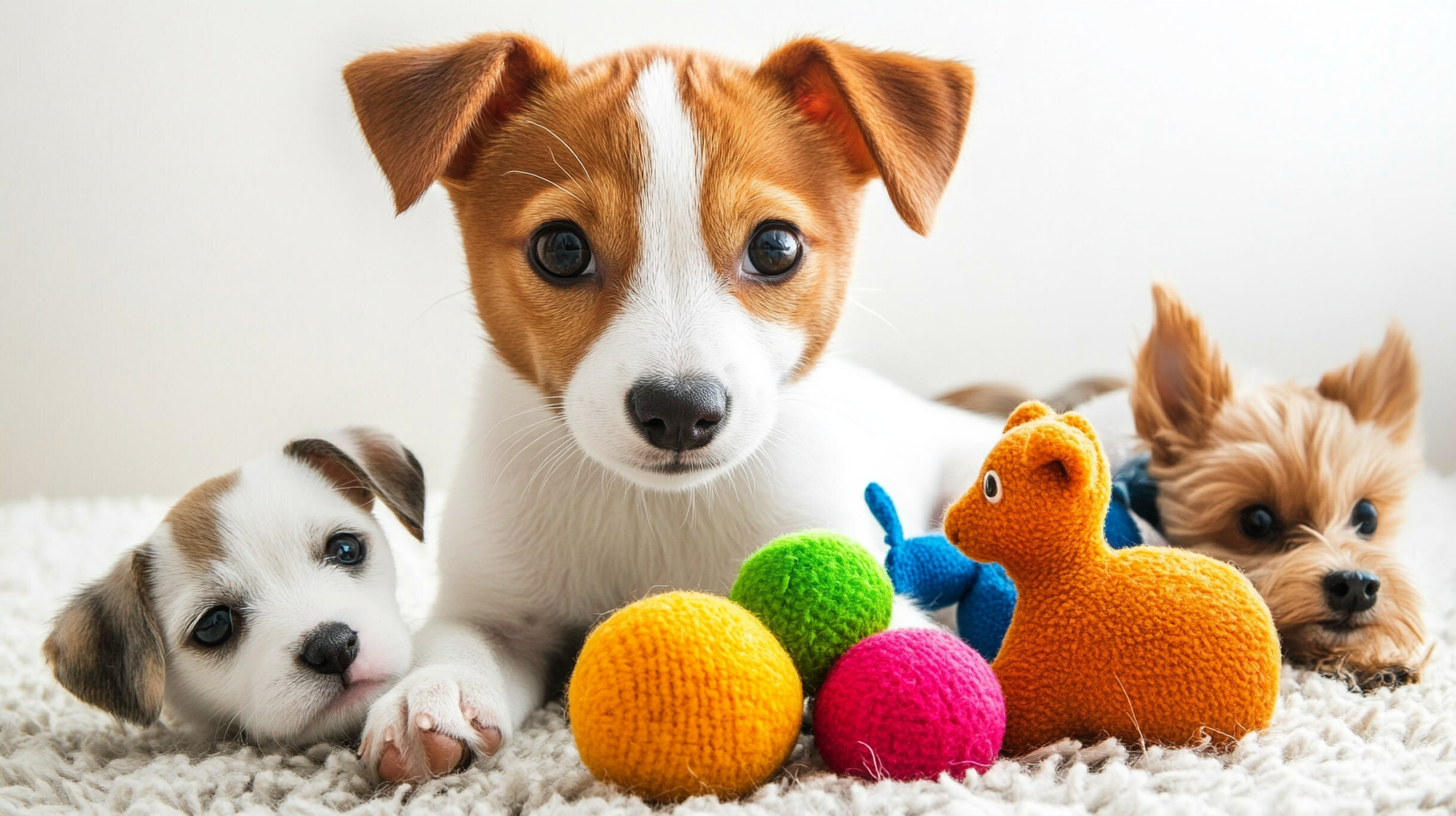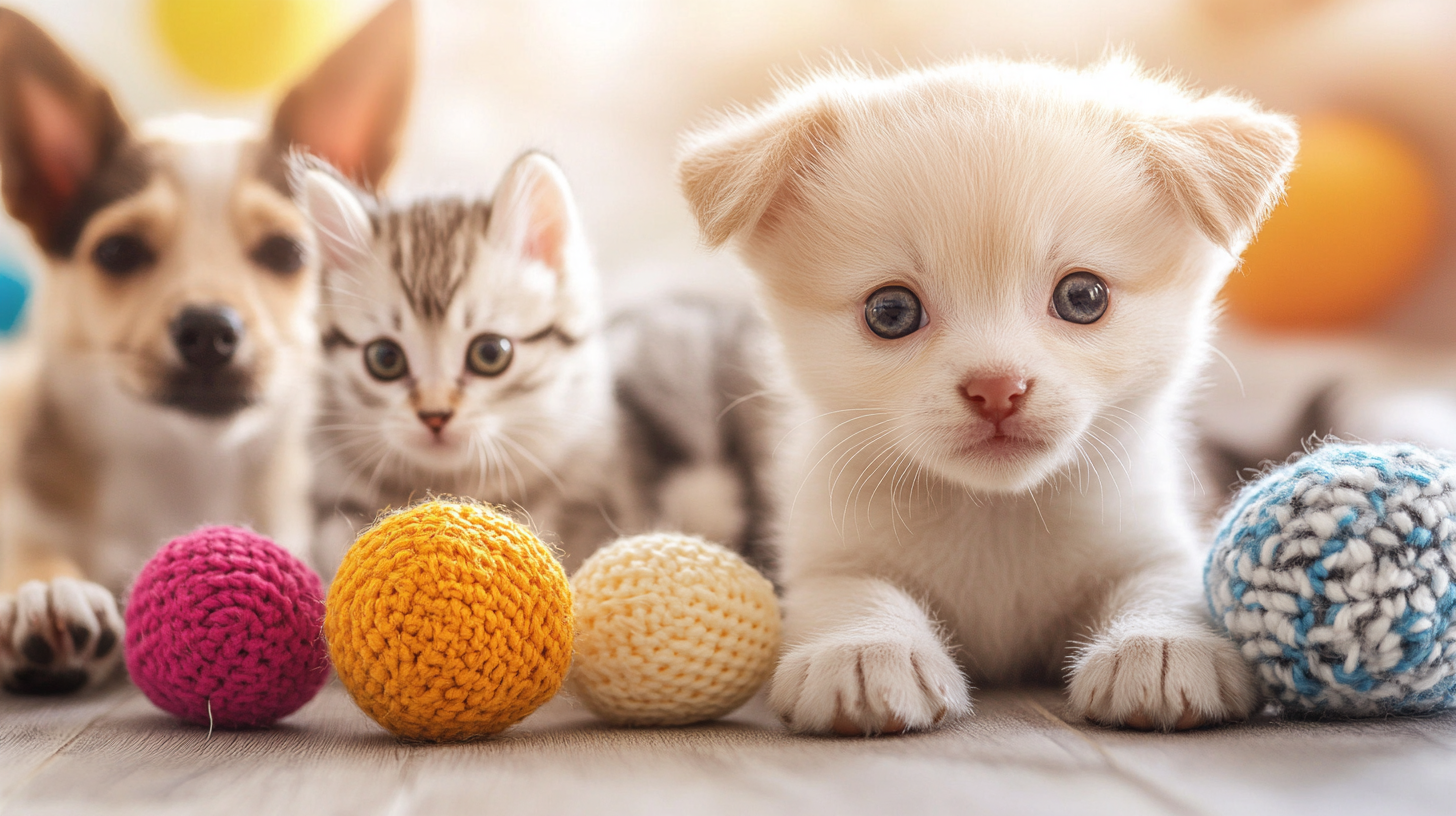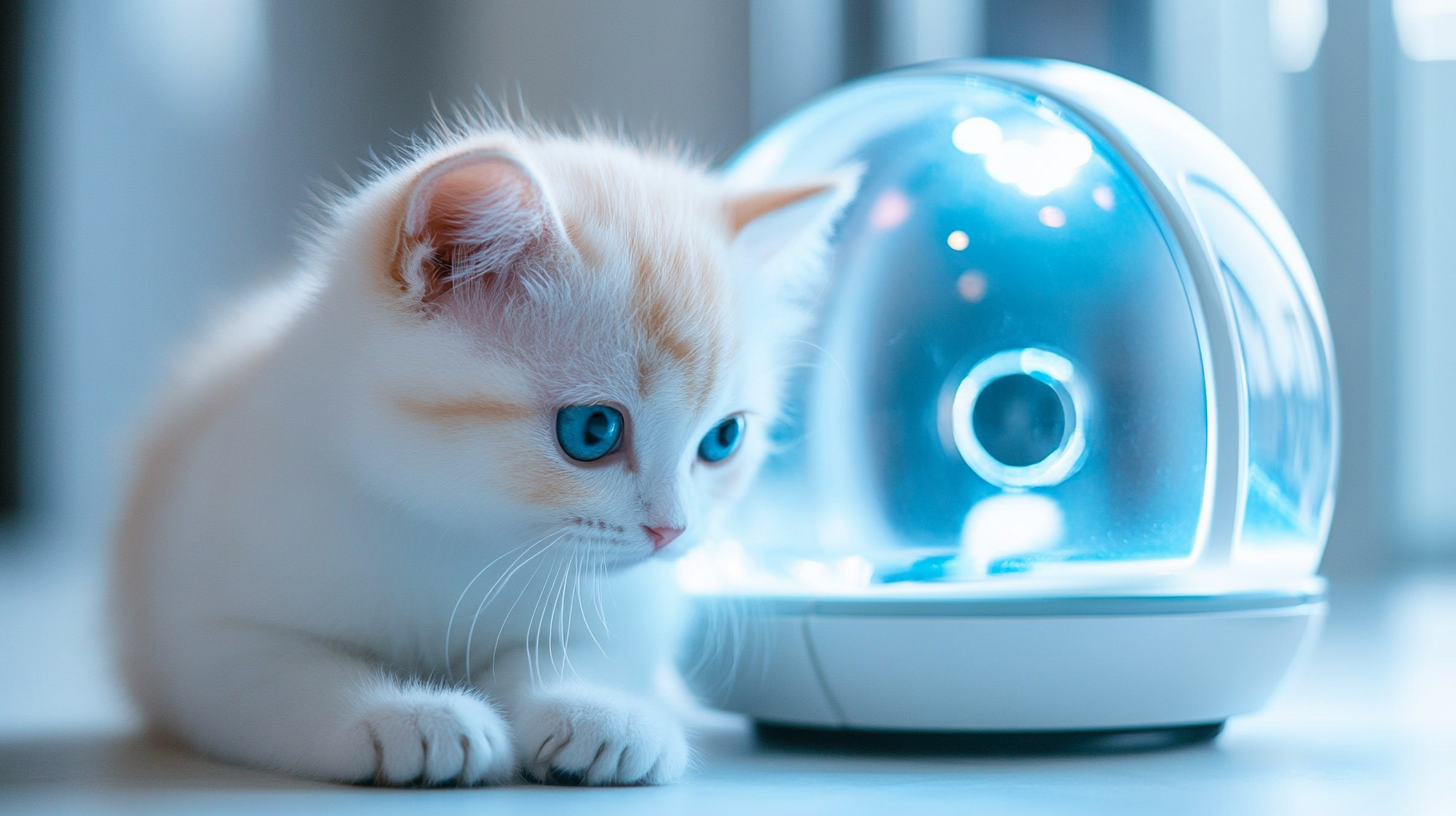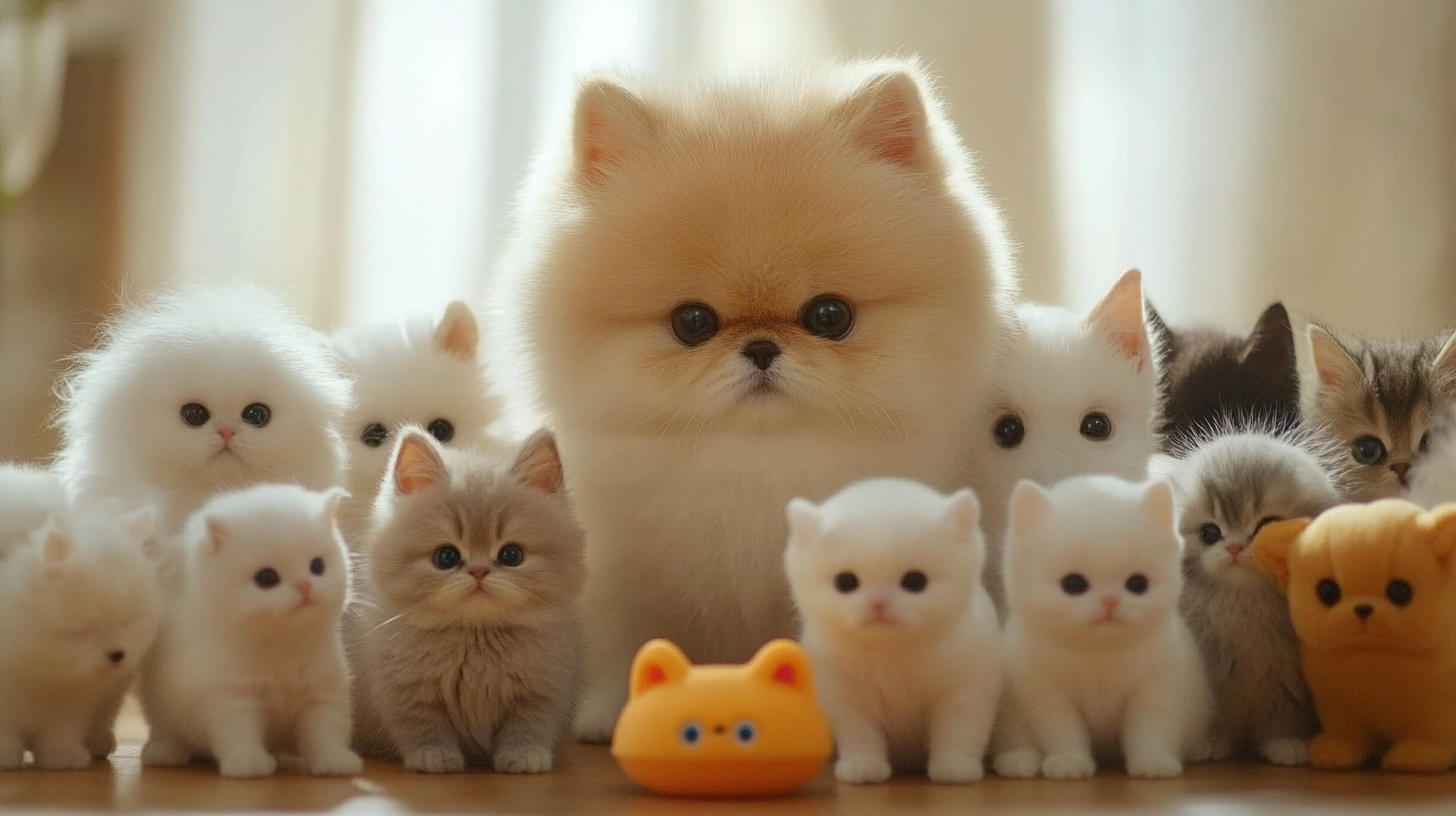The pet toys market is undergoing a transformation, driven by innovative design, evolving consumer preferences, and a deeper understanding of pet psychology. As we approach 2025, the landscape of pet entertainment is set to change dramatically, with a rising emphasis on interactive and engaging play. Pet owners are increasingly looking for toys that not only entertain but also promote health and well-being for their furry companions. This shift towards multifunctional pet toys reflects a greater awareness of the impact that playtime has on a pet's physical and mental health.
In this blog, we will explore the emerging trends in the pet toys market and what they mean for the future of pet entertainment. From smart toys equipped with technology that allows for remote interaction to eco-friendly options that prioritize sustainability, the upcoming innovations promise to enrich the lives of pets and their owners alike. Join us as we delve into insights that highlight the direction in which the pet toys industry is headed, ensuring that playtime is not just an activity, but a vital aspect of pet care and happiness.

The pet toys market is undergoing a significant transformation as we approach 2025, driven by innovations that engage our furry friends more deeply than ever before. Emerging pet toys are shaped by the latest technological advancements, with a keen focus on enhancing entertainment while promoting physical health and mental stimulation. Statistics reveal that pet ownership has soared, with over 70% of households now owning a pet, up from just 56% in 1988. This growing trend underscores the increasing demand for innovative pet products that cater to an engaged and conscious pet parenting community. Innovations in pet toys are bolstered by advancements in artificial intelligence, which are not only enhancing the functionality of toys but also personalizing the play experience for pets. At the forefront of these changes, you'll find interactive toys that adapt to a pet's behavior, providing real-time feedback and keeping them entertained longer. The rise of smart pet toys reflects a broader industry trend towards solutions that blend technology with playtime, making it easier for pet parents to keep their animals active and mentally stimulated. A recent report highlights that AI is set to unlock future opportunities not just in pet food but also in the realm of pet entertainment. These developments signal a shift in how products are designed, creating a more enriched environment for pets. As the industry continues to evolve, we can expect to see a slew of products that not only entertain but also support the wellbeing of our companions, fostering a deeper bond between pets and their owners.

As we look towards 2025, the pet toy industry is poised for a significant transformation, chiefly driven by a growing demand for sustainability in product design. Pet owners are becoming increasingly conscious of the environmental impact of their purchases, favoring toys crafted from eco-friendly materials. According to a report by Grand View Research, the global pet toy market is expected to reach USD 3.38 billion by 2025, with a notable shift towards sustainable practices.
Eco-friendly materials such as recycled plastics, organic cotton, and natural rubber are gaining traction among manufacturers. Brands that prioritize sustainable design are not only appealing to the environmentally-conscious consumer but are also carving out a competitive edge in the marketplace. For instance, a survey conducted by the American Pet Products Association revealed that 70% of pet owners would be willing to pay a premium for toys made from sustainable materials.
Moreover, the integration of sustainable practices extends beyond materials; production processes are also evolving. Companies are increasingly adopting eco-efficient technologies that reduce waste and energy consumption. Reports indicate that brands embracing these practices are witnessing a revenue growth of 15-20%, signaling a robust market shift toward responsibility and sustainability in pet entertainment. As the pet toy industry moves forward, the emphasis on eco-friendliness will undoubtedly shape consumer preferences and influence product development, establishing a new norm for future pet toys.

As we delve into the Pet Toys Market Trends of 2025, it's clear that technology integration is revolutionizing the way our pets engage with toys. Smart toys, equipped with innovative features, are becoming increasingly popular, as they not only entertain but also stimulate pets' mental and physical well-being. By merging playtime with interactive technology, these toys create a dynamic environment that keeps pets engaged for longer periods.
One of the most exciting advancements in pet entertainment is the development of toys that respond to a pet's behavior. For instance, there are automated fetch machines that can throw balls at varying distances, keeping dogs active and entertained without requiring constant human involvement. Similarly, interactive cat toys can mimic the movements of small prey, encouraging cats to engage in instinctual hunting behaviors. This level of interactivity not only satisfies pets' natural instincts but also helps to reduce behavioral issues stemming from boredom.
Moreover, smart toys often come with app integration, allowing pet owners to customize play sessions and monitor their pets' activity levels remotely. This combination of technology and creativity redefines pet care, making it easier for owners to ensure their pets receive adequate exercise and mental stimulation. As we look ahead to 2025, it is evident that smart technology will continue to enhance pet engagement, offering a future where playtime is more interactive, enriching, and beneficial for our furry companions.

As we look ahead to 2025, understanding consumer preferences in the pet toys market reveals significant insights into the future of pet entertainment. Pet owners are increasingly seeking engaging, durable, and interactive toys that enrich their pets' lives while catering to their specific needs. This trend reflects a growing awareness of pet well-being, where toys are not merely products but tools that foster mental stimulation and physical activity.
In recent years, sustainable and eco-friendly materials have gained traction among consumers. Pet owners are becoming more conscious of the environmental impact of their purchases, leading to a demand for toys made from recycled or biodegradable materials. Brands that emphasize sustainability not only appeal to eco-minded consumers but also enhance their brand loyalty by aligning with the values of a growing segment of the market.
Moreover, technology is playing a pivotal role in shaping consumer preferences. Smart toys embedded with sensors and connectivity features are becoming increasingly popular, enabling pets and their owners to interact in new ways. These innovations not only entertain pets but also provide valuable data to owners about their pets' behavior, further driving the choice for high-tech options. As we move toward 2025, this interplay between consumer preferences and innovative product offerings will continue to redefine the landscape of pet entertainment.
As pet ownership continues to rise, the selection and development of pet toys are increasingly influenced by considerations of pet health and wellness. The global pet toys market is projected to reach significant growth by 2025, driven by the increasing awareness among pet owners about the importance of mental and physical stimulation for their pets. Data indicates that pet owners are dedicating more resources to ensuring their pets receive toys that not only entertain but also contribute to their overall well-being.
In line with these trends, manufacturers are focusing on creating toys that encourage physical activity and cognitive engagement for pets. According to reports, nearly 70% of pet owners are now considering health benefits in their purchasing decisions, opting for toys that promote exercise or provide dental benefits. This shift is reminiscent of recent initiatives aimed at child development, such as the introduction of parenting kits in several regions, which emphasize the importance of developmentally appropriate toys. Similarly, the pet industry is seeing a push towards products that enhance pet health as part of their core value proposition.
Moreover, the continued integration of technology into pet toys, such as interactive and smart toys, is expected to shape the future of the market. These innovations not only provide entertainment but also allow pet owners to monitor their pets' health and activity levels. This alignment between play and wellness is resonating with consumers, reflecting a broader trend toward responsible pet ownership that prioritizes both enjoyment and health in the lives of our furry companions. As we look toward 2025, the role of pet health and wellness in toy selection is set to become a defining aspect of the pet toys landscape.